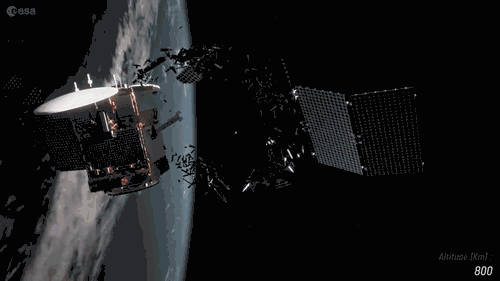
Swirling fragments of past space endeavors are trapped in orbit around Earth, threatening our future in space. Over time, the number, mass and area of these debris objects grows steadily, boosting the risk to functioning satellites.
ESA's Space Debris Office constantly monitors this ever-evolving debris situation, and every year publishes a report on the current state of the debris environment.
Since the beginning of the space age in 1957, tons of rockets, spacecraft and instruments have been launched to space. Initially, there was no plan for what to do with them at the end of their lives. Since then, numbers have continued to increase and explosions and collisions in space have created hundreds of thousands of shards of dangerous debris.
"The biggest contributor to the current space debris problem is explosions in orbit, caused by left-over energy—fuel and batteries—onboard spacecraft and rockets. Despite measures being in place for years to prevent this, we see no decline in the number of such events. Trends towards end-of-mission disposal are improving, but at a slow pace," explains Holger Krag, Head of the Space Safety Program.
Reducing debris creation
"In view of the constant increase in space-traffic, we need to develop and provide technologies to make debris prevention measures fail-safe, and ESA is doing just that through its Space Safety Program. In parallel, regulators need to monitor the status of space systems as well as global adherence to debris mitigation under their jurisdiction more closely".
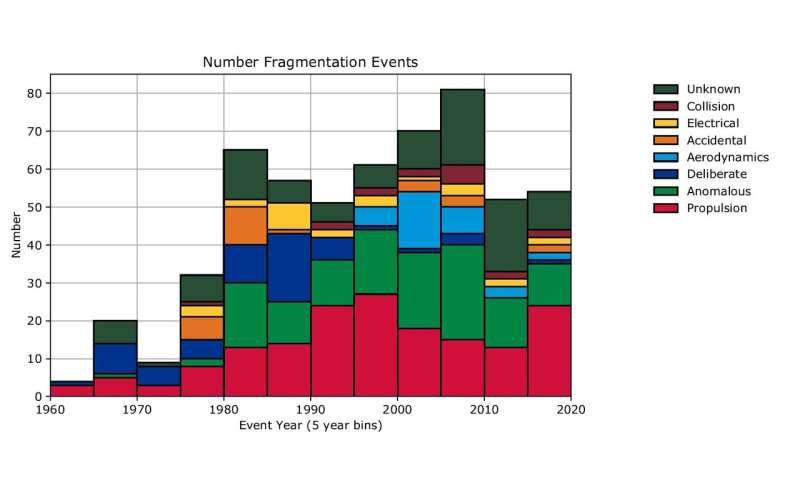
International guidelines and standards now exist making it clear how we can reach a sustainable used of space:
- design rockets and spacecraft to minimize the amount of "shedding" – material becoming detached during launch and operation, due to the harsh conditions of space
- prevent explosions by releasing stored energy, "passivating" spacecraft once at the end of their lives
- Move defunct missions out the way of working satellites—either by de-orbiting them or moving them to a "graveyard orbit"
- Prevent in-space crashes through careful choice of orbits and by performing "collision avoidance maneuvers."
Many space agencies, private companies and other space actors are changing their behavior to adhere to these guidelines—but is this enough?
Worrying trends
We're making more and more debris
The number of debris objects, their combined mass, and the total area they take up has been steadily increasing since the beginning of the space age. This is further fuelled by a large number of in-orbit break-ups of spacecraft and rocket stages.
The total area that space debris takes up is important as it is directly related to how many collisions we expect in the future. As things stand, collisions between debris and working satellites is predicted to overtake explosions as the dominant source of debris.
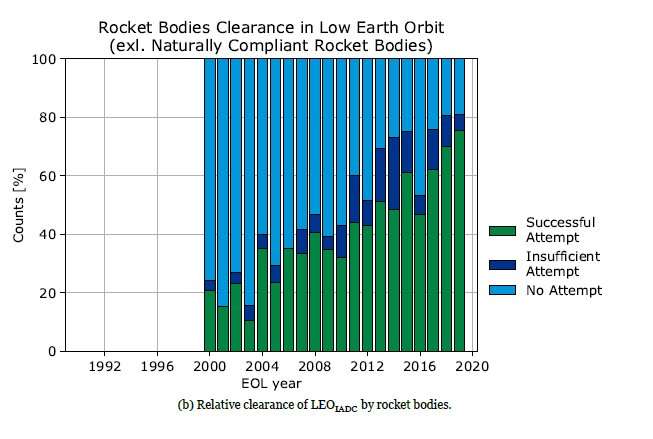
Debris-creating events have become more common
On average over the last two decades, 12 accidental "fragmentations" have occured in space every year—and this trend is unfortunately increasing. Fragmentation events describe moments in which debris is created due to collisions, explosions, electrical problems and even just the detachment of objects due to the harsh conditions in space.
On the bright side
Attempts are being made to follow the rules (not yet enough)
While not all satellites currently comply with international guidelines, more and more space actors are attempting to stick to the rules. In the last decade, 15-30% of objects, or payloads launched into non-compliant orbits in the low-Earth orbit region (excluding spacecraft related to human spaceflight) had attempted to comply with debris mitigation measures. Between 5% and 20% did so successfully, peaking at 35% in 2018 due to the active de-orbiting from the Iridium constellation.
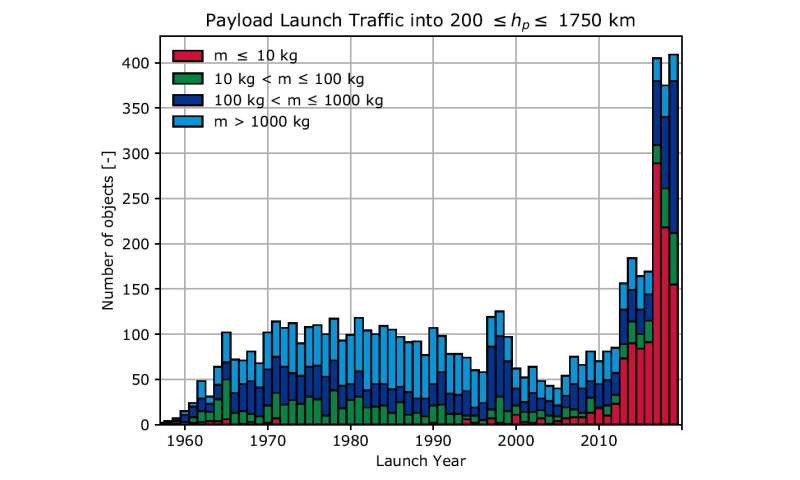
More rockets are being safely disposed of
When it comes to rockets, more and more are being sustainably disposed of. Between 40 and 80% of those in a non-compliant low-Earth orbit this decade attempted to comply with debris mitigation measures. Of these, 30-70% did so successfully.
Of all the rockets launched in the last decade, 60-80% (in terms of mass) adhered to mitigation measures. Some rockets are in low-Earth orbits that lead them to decay naturally in Earth's atmosphere, but a significant amount of rockets are directed back into Earth's atmosphere where they either burn up or are made to re-enter over uninhabited areas. Such practices are increasing, with about 30% of rockets safely re-entering in a controlled manner since 2017.
This is very good news. Rocket bodies are among the largest objects we send to space and are at a high risk of being involved in catastrophic collisions. All steps to ensure they do not linger in orbit after a maximum of 24 hours from launch is to be celebrated.
More satellites put in low-altitude orbits where they naturally burn up
The amount of "traffic" launched into the low-Earth orbit protected region—up to 2000 km in altitude—is changing significantly, in particular due to the proliferation of small satellites and constellations.
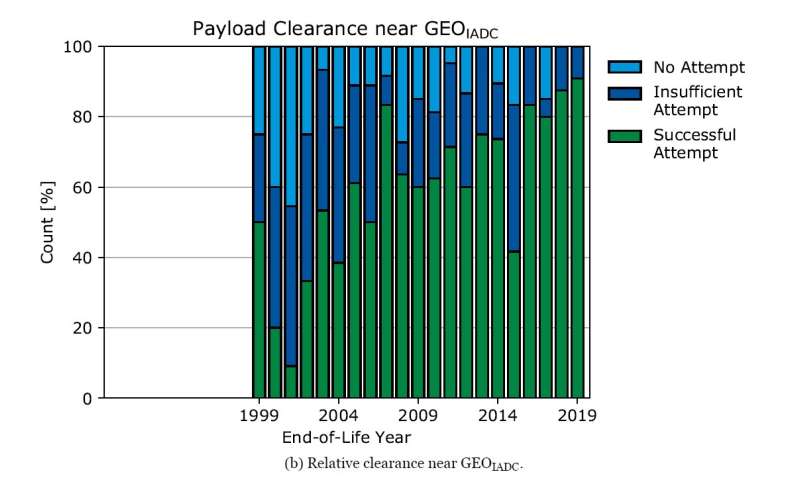
Around 88% of small payloads launched into this region will naturally adhere to space debris mitigation measures due to their low altitude, meaning they break up in Earth's atmosphere.
Between 30-60% of all satellite mass (excluding from human spaceflight) is estimated to adhere to end-of-life guidelines for the same reason.
"The accelerating increase of satellites launched into low-Earth orbit is starkly visible in our latest report," explains Tim Florer, Head of ESA's Space Debris Office.
"We have observed fundamental changes in the way we are using space. To continue benefiting from the science, technology and data that operating in space brings, it is vital that we achieve better compliance with existing space debris mitigation guidelines in spacecraft design and operations. It cannot be stressed enough—this is essential for the sustainable use of space."
High rates of debris mitigation in geostationary orbit
Satellites launched into the geostationary protected region, 35,586—35,986 km in altitude, have very high rates of adherence to debris mitigation measures. Between 85% and 100% that reached the end of their life this decade attempted to comply with these measures, of which 60—90% did so successfully.
In geostationary orbit, there is a clear commercial interest for operators to keep their paths free from defunct satellites and debris—to not do so would put their spacecraft, and bottom line, at serious risk.
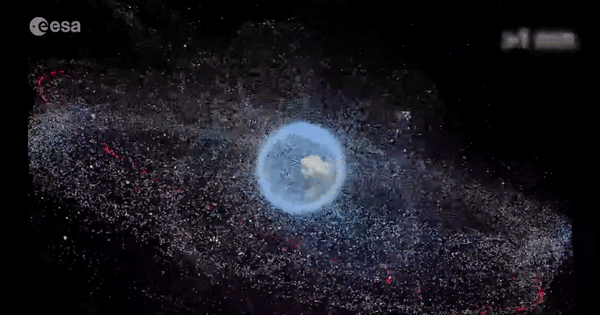
What now?
Systematic analysis of changing behaviors in space, when it comes to the adoption of debris mitigation measures, provides reasons to be cautiously optimistic—this was not the case a decade ago.
If adopted quickly, sustained investment in new technologies to passivate and dispose of missions will allow our environment to cope with the continued increase in space traffic and ever-more complex operations.
We must think of the space environment as a shared and limited natural resource. Continued creation of space debris will lead to the Kessler syndrome, when the density of objects in low Earth orbit is high enough that collisions between objects and debris create a cascade effect, each crash generating debris that then increases the likelihood of further collisions. At this point, certain orbits around Earth will become entirely inhospitable.
ESA is actively working to support the guidelines for the long-term sustainability of outer space activities from the UN Committee on the Peaceful Uses of Outer Space, including funding the world's first mission to remove a piece of debris from orbit, helping to create an international space sustainability rating and developing technologies to automate collision avoidance and reduce the impact on our environment from space missions.
Explore further
Citation: The current state of space debris (2020, October 12) retrieved 12 October 2020 from https://ift.tt/3lHxtxz
This document is subject to copyright. Apart from any fair dealing for the purpose of private study or research, no part may be reproduced without the written permission. The content is provided for information purposes only.
"current" - Google News
October 12, 2020 at 07:05PM
https://ift.tt/3lHxtxz
The current state of space debris - Phys.org
"current" - Google News
https://ift.tt/3b2HZto
https://ift.tt/3c3RoCk
Bagikan Berita Ini















0 Response to "The current state of space debris - Phys.org"
Post a Comment